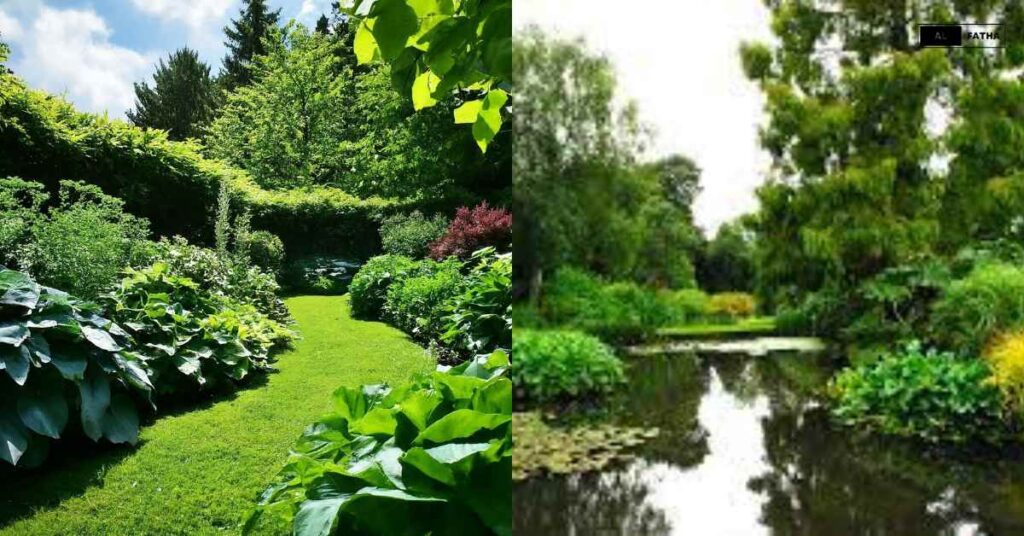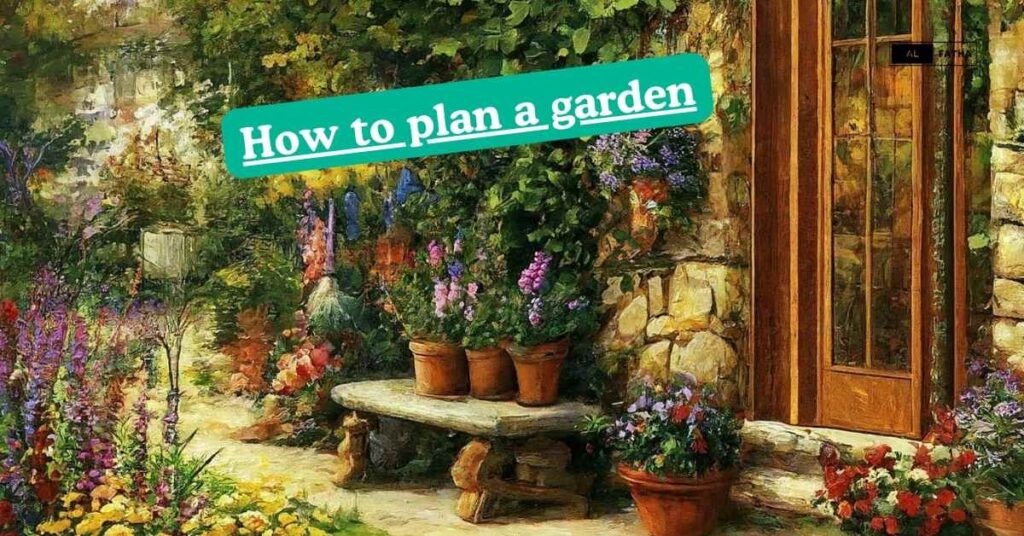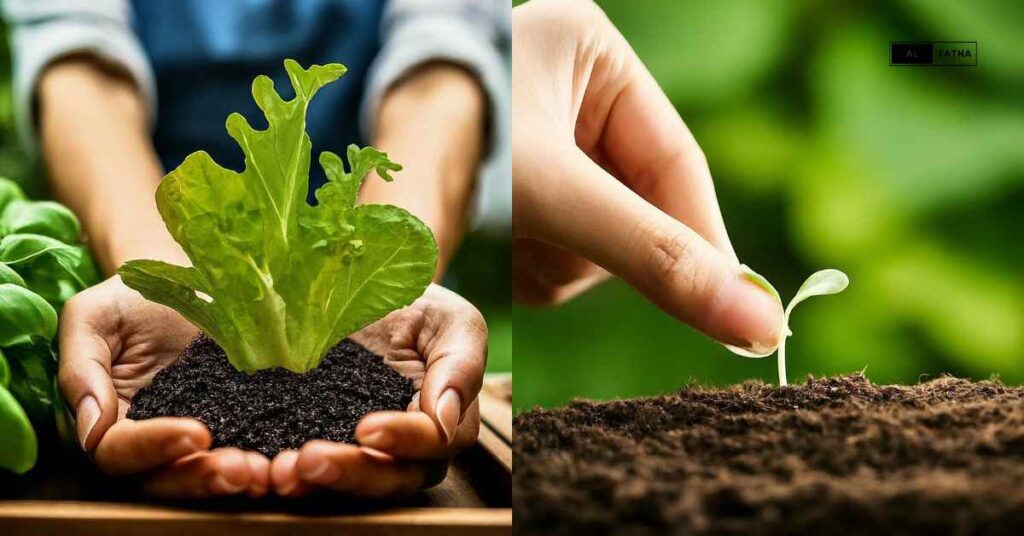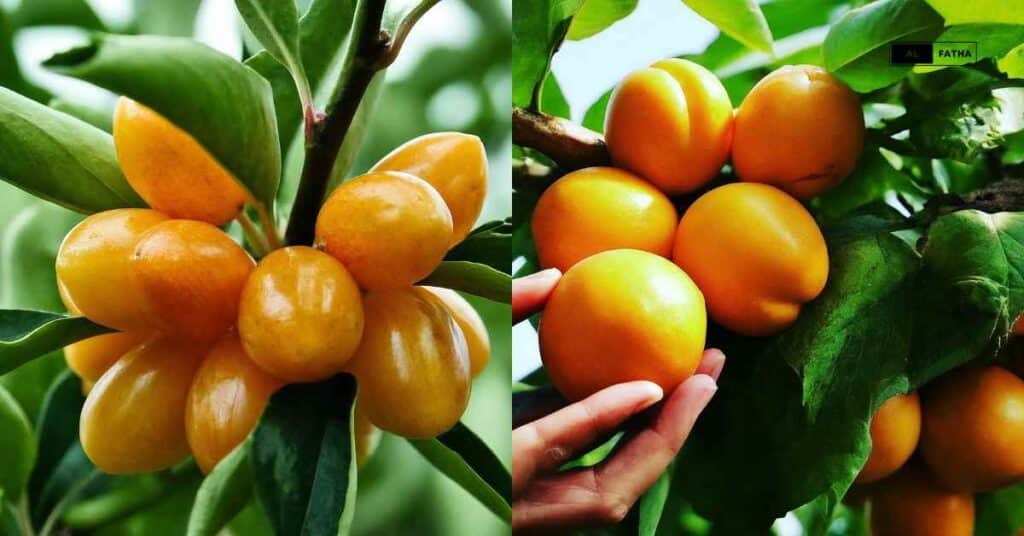Garden Musings Unveiled: Discovering Wisdom in Every Petal
Table of Contents
1. Introduction

Welcome to “Garden Musings 101: Cultivating Inspiration in Your Backyard.” In the realm of nature’s canvas, your backyard holds the potential to become a haven of inspiration and tranquility. Whether you’re a gardening novice or a seasoned enthusiast, this article unveils the secrets to transform your outdoor space into a thriving oasis of beauty and joy.
Join us as we delve into essential tips, practical advice, and the sheer delight of nurturing your garden. Let the journey begin, and discover the art of cultivating inspiration right at your doorstep.
2. Getting Started: Gardening for Beginners
Gardening, often considered an art form, beckons both novices and seasoned enthusiasts alike. For those embarking on their gardening journey, here are ten indispensable tips to set you on the path to green-thumb success:
Know Your Region:
Understanding your local climate and growing zone is fundamental. It influences the types of plants that will thrive in your area and guides your gardening decisions.
Test Your Soil:
A healthy garden begins with fertile soil. To find out the pH and nutrient levels in your soil, conduct a test. This insight will inform your plant selection and help you amend the soil as needed.
Start With "Easy" Plants:
As a beginner, opt for plants that are resilient and forgiving. Herbs like basil, mint, or hardy flowers like marigolds are excellent choices, allowing you to build confidence as you nurture them.
Create a Plan:
Before digging in, have a rough plan for your garden layout. Consider factors such as sunlight exposure, space, and plant compatibility. A well-thought-out plan sets the stage for a flourishing garden.
Keep a Notebook:
Documenting your gardening journey is invaluable. Record planting dates, observations, and lessons learned. This simple practice helps you track your progress and make informed decisions in subsequent seasons.
Set a Calendar:
Timing is crucial in gardening. Create a planting calendar that aligns with your local climate and growing season. This ensures you sow seeds and transplant seedlings at optimal times.
Water Carefully:
Overwatering or underwatering can harm your plants. Learn the water needs of your specific plants and adjust your watering schedule accordingly. Aim for consistency to foster healthy growth.
Keep Up the Good Work!:
Gardening is a continuous process. Regularly tend to your garden by weeding, pruning, and maintaining soil health. Consistent care yields a bountiful and visually appealing outdoor space.
Try to Be Patient:
Patience is a virtue in gardening. Plants take time to grow and flourish. Embrace the learning curve, celebrate small victories, and enjoy the gradual transformation of your garden.
Armed with these foundational tips, even the most inexperienced gardener can embark on a rewarding journey towards a vibrant and flourishing backyard oasis. Whether you have a sprawling yard or a modest balcony, these guidelines will pave the way for a successful and enjoyable gardening experience.
3. Understanding Your Garden


Before you can cultivate a thriving garden, it’s essential to get acquainted with the unique characteristics of your outdoor space. This section explores the crucial steps involved in understanding your garden:
Exploring Your Garden Space:
Begin by surveying your garden area. Make a note of its dimensions, design, and installed features. Identify sunny and shaded spots, noting how sunlight moves across the space throughout the day. Understanding these nuances will guide your plant placement decisions.
Identifying Your Gardening Zone:
Every region has a designated gardening zone, a key factor in plant selection. Determine your zone through reputable gardening resources or consult with local experts. This information ensures you choose plants that thrive in your specific climate conditions.
Assessing Sunlight and Water Availability:
Sunlight and water are lifeblood for plants. Monitor how sunlight interacts with your garden—some plants thrive in full sun, while others prefer partial or full shade. Similarly, assess water drainage to prevent waterlogged soil, a potential threat to plant health.
Choosing the Right Location for Your Plants:
Based on your garden’s characteristics, strategically place plants according to their sunlight and water requirements. Consider vertical space utilization, especially if you have limited ground area. Well-planned placement enhances the visual appeal and overall health of your garden.
Consideration for Raised Beds and Containers:
If your garden space is constrained or if you want more control over soil quality, consider raised beds or containers. These alternatives allow you to create optimal growing conditions for specific plants, regardless of your native soil quality.
Understanding your garden sets the stage for a successful gardening venture. It empowers you to make informed decisions about plant selection, placement, and care. Take the time to observe and appreciate the unique characteristics of your outdoor haven, and watch as your gardening efforts blossom into a captivating landscape.
4. Planning Your Garden


Creating a garden that delights the senses and thrives with vitality starts with thoughtful planning. In this section, we’ll explore the key aspects of crafting a well-designed garden:
Importance of a Well-Thought-Out Garden Plan:
Before you grab your gardening tools, take a moment to sketch out a plan for your garden. A well-thought-out design considers factors like aesthetics, functionality, and plant compatibility. It serves as a roadmap, ensuring a harmonious and visually pleasing outdoor space.
Choosing the Right Location for Your Plants:
Strategic plant placement is crucial for optimal growth. Take into account factors such as sunlight exposure, water drainage, and the mature size of plants. Grouping plants with similar needs together simplifies maintenance and promotes a cohesive aesthetic.
Consideration for Raised Beds and Containers:
If your native soil is less than ideal, or if space is limited, consider incorporating raised beds or containers into your garden plan. These options allow for better control over soil quality, drainage, and can be an attractive addition to your landscape.
Selecting the Right Plants:
The success of your garden hinges on choosing plants that thrive in your climate and soil conditions. Research the specific needs of each plant, considering factors like sunlight requirements, water preferences, and growth patterns. Aim for a diverse mix of plants to create visual interest and support biodiversity.
Balancing Aesthetics and Functionality:
A beautiful garden is not just visually appealing; it should also serve a purpose. Consider how you intend to use the space—whether it’s for relaxation, entertaining, or growing edibles. Strive for a balance between aesthetics and functionality to create a garden that enhances both your well-being and your surroundings.
Incorporating Hardscape Elements:
Hardscape elements, such as pathways, patios, and decorative structures, add structure and functionality to your garden. Plan their placement thoughtfully, ensuring they complement the overall design and facilitate easy navigation through the space.
Remember, your garden plan is a flexible guide, and adjustments can be made as you observe the evolving needs of your plants and your own preferences. Taking the time to plan lays the foundation for a garden that not only survives but thrives with vitality and beauty.
5. Planting Essentials


Once you’ve laid the groundwork with a well-thought-out plan, it’s time to dive into the heart of gardening—the planting process. This section covers the essential steps and considerations for successful planting:
Learning the Art of Planting:
Planting is more than just digging a hole and placing a seedling. Learn the proper depth, spacing, and technique for each type of plant. This ensures that roots establish well and plants have ample space to grow without competing for nutrients.
Selecting the Right Soil:
Soil quality directly impacts plant health. Prioritize well-draining soil rich in organic matter. Consider amending your native soil with compost or other organic materials to improve fertility and structure.
Exploring Different Planting Techniques:
Depending on the plants you choose, various planting techniques may be applicable. From direct seeding to transplanting seedlings, understanding the nuances of each method enhances your chances of successful plant establishment.
Understanding the Role of Compost:
Incorporating compost into your planting beds enriches the soil with essential nutrients and improves its water retention capacity. Regularly adding compost contributes to the overall health of your garden, fostering robust plant growth.
Guidance on Watering Practices:
Watering is a delicate balance. Different plants have varied water needs, and overwatering can be as harmful as underwatering. Establish a watering routine based on plant requirements and monitor soil moisture to prevent water-related issues.
Seasonal Considerations:
Be mindful of the seasonal nuances in your region. Some plants thrive in specific seasons, while others may need protection during extreme weather conditions. Adjust your planting schedule and practices accordingly.
Mulching for Moisture Retention:
Mulch is applied to the soil surrounding plants to assist control temperature, weed growth, and soil moisture retention. Mulching is especially beneficial during hot weather or in areas with erratic rainfall.
By mastering the art of planting and paying attention to the specific needs of your chosen plants, you set the stage for a thriving garden. These planting essentials, combined with a solid plan and a touch of patience, contribute to the overall success and vibrancy of your outdoor oasis.
6. Nurturing Your Garden


The nurturing phase of gardening is akin to caring for a growing family. Providing consistent attention and care ensures that your garden flourishes. In this section, we delve into the essential practices for nurturing a vibrant and healthy garden:
Regular Feeding and Watering Practices:
Just as humans need a balanced diet, plants require nutrients for optimal growth. Implement a regular feeding schedule, either through organic fertilizers or compost. Additionally, maintain a consistent watering routine, adjusting based on the specific needs of your plants.
Understanding the Role of Compost:
Compost isn’t just for initial planting—it’s a continuous source of nourishment for your garden. Regularly replenish compost around the base of plants to enrich the soil and promote a nutrient-rich environment.
Tips for Proper Pruning:
Pruning is a skill that enhances the health and appearance of your plants. Remove dead or diseased branches, shape overgrown shrubs, and encourage bushier growth through strategic pruning. Each plant species has unique pruning requirements, so familiarize yourself with these guidelines.
Regular Weeding:
Weeds are the unwelcome guests in any garden, competing for resources with your desired plants. Regularly weed your garden beds to prevent these interlopers from stealing nutrients and sunlight.
Organic Pest Control Methods:
Pests are an inevitable part of gardening, but there are natural and organic methods to manage them. Introduce beneficial insects, like ladybugs, and use neem oil or soapy water sprays to deter common garden pests without resorting to harsh chemicals.
Mindful Seasonal Care:
Different seasons bring varied challenges and opportunities. Adjust your care routine accordingly. In colder months, protect sensitive plants from frost, while hot summers may require additional watering and shading.
Observation and Adaptation:
Your garden is a dynamic, ever-changing entity. Regularly observe the health and growth patterns of your plants. Adapt your care practices based on the specific needs and responses of each plant.
By consistently nurturing your garden, you create an environment where plants thrive, bloom, and contribute to the overall beauty of your outdoor space. As you develop a deeper understanding of your garden’s needs, the act of nurturing becomes a gratifying and fulfilling aspect of the gardening journey.
7. Start Small, Grow Big


Embarking on a gardening journey need not be an overwhelming endeavor. In fact, starting small often proves to be the most effective strategy. This section emphasizes the benefits of beginning with a modest garden and gradually expanding your horticultural horizons:
Benefits of Starting Small:
Manageability: A small garden is more manageable for beginners. It allows you to focus on a select number of plants and learn their specific needs without feeling overwhelmed.
Learning Curve: Starting with a few plants lets you observe and understand the growth patterns, watering requirements, and reactions to different weather conditions. This knowledge becomes invaluable as you expand your garden.
Gradual Expansion and Experimentation:
Additions Over Time: Rather than creating an expansive garden from the outset, consider adding a few new plants or features each season. This gradual approach allows you to experiment with different species and gardening techniques.
Trial and Error: Gardening is a journey of discovery. By introducing new elements incrementally, you have the opportunity to learn through trial and error, refining your skills and understanding your preferences.
Maximizing Space in Limited Areas:
Vertical Gardening: Small spaces can still yield impressive results. Explore vertical gardening techniques, such as trellises, hanging planters, and tiered containers, to make the most of limited ground space.
Container Gardening: Containers offer flexibility in terms of placement and allow you to control soil quality. They are an excellent option for balconies, patios, or areas with challenging soil conditions.
Focused Attention and Care:
Quality over Quantity: A small garden allows you to give focused attention to each plant. You can better observe their growth, identify issues early, and provide tailored care.
Connection with Plants: Establishing a connection with your plants is crucial. Starting small enables you to form a bond with each plant, enhancing your overall gardening experience.
Building Confidence and Enjoyment:
Celebrate Successes: Achieving success with a small garden builds confidence. Celebrate the flourishing blooms or the first harvest, fostering a sense of accomplishment.
Enjoyment of the Process: Gardening is not just about the end result; it’s about the journey. Starting small allows you to savor the process, learning and enjoying each step along the way.
Remember, a flourishing garden is not built overnight. By starting small and growing at a comfortable pace, you set the stage for a sustainable and enjoyable gardening experience. As your confidence and expertise grow, so too will the beauty and abundance of your outdoor sanctuary.
8. Guarding Against Pests
Maintaining a vibrant garden requires vigilance against potential invaders—pests that can compromise the health and beauty of your plants. In this section, we’ll explore strategies for identifying, managing, and preventing common garden pests:
Identifying and Understanding Garden Pests:
Common Culprits: Familiarize yourself with common pests such as aphids, slugs, snails, and caterpillars. Recognizing these intruders early allows for swift and targeted action.
Beneficial Insects: Not all insects are adversaries. Some, like ladybugs, predatory beetles, and spiders, actually help control pest populations. Encourage these beneficial insects as a natural form of pest management.
Organic Pest Control Methods:
Neem Oil: Neem oil, derived from the neem tree, is an effective and organic pesticide. It disrupts the life cycle of pests and deters them from feeding on your plants.
Soapy Water Solutions: A mixture of mild soap and water can be sprayed on plants to deter pests. Ensure the solution is gentle to avoid harming beneficial insects.
Companion Planting:
Strategic Plant Pairings: Some plants naturally repel pests or attract predators that feed on them. Explore companion planting by strategically placing plants like marigolds, basil, or nasturtiums to discourage unwanted insects.
Regular Monitoring and Inspection:
Early Intervention: Regularly inspect your plants for signs of pest infestation. Catching issues early allows for less invasive and more effective control measures.
Underside Inspection: Many pests prefer the undersides of leaves. When inspecting, pay particular attention to this area for signs of eggs, larvae, or feeding damage.
Natural Barriers and Traps:
Physical Barriers: Use physical barriers like row covers to protect plants from flying insects. This is especially useful for vulnerable crops.
Traps and Baits: Set traps or use bait stations to capture and reduce pest populations. This can be particularly effective for controlling pests like slugs and snails.
Crop Rotation:
Disrupting Life Cycles: Rotate your crops annually to disrupt the life cycles of soil-borne pests. This prevents the buildup of specific pests that may target certain plant families.
Integrated Pest Management (IPM):
Holistic Approach: Adopt an Integrated Pest Management approach that combines multiple strategies. This includes biological controls, cultural practices, and, if necessary, targeted and judicious use of organic pesticides.
By staying vigilant and adopting a proactive stance against pests, you can protect the health and vitality of your garden. Remember, a resilient garden is one that is not only beautiful but also naturally equipped to resist and rebound from potential threats.
9. Embracing Wildlife


A thriving garden is not just a haven for plants but also a welcoming environment for a variety of wildlife. In this section, we explore the benefits of embracing and fostering biodiversity in your garden:
Creating a Garden-Friendly Environment:
Native Plants: Choose native plants that attract local wildlife, such as birds, butterflies, and bees. These plants provide familiar food sources and habitats for native species.
Water Features: Incorporate bird baths, small ponds, or water features to attract and provide water for birds and insects. Even a shallow dish with fresh water can make a significant difference.
Encouraging Pollinators:
Plant Diversity: Cultivate a diverse range of flowering plants to attract pollinators like bees and butterflies. Pollinators play a crucial role in the reproduction of many plants, enhancing overall garden health.
Avoiding Pesticides: Minimize or eliminate the use of chemical pesticides that can harm pollinators. Opt for organic pest control methods to protect both your garden and its visitors.
Building Habitat:
Nesting Boxes: Install bird nesting boxes or bat houses to provide shelter for birds and bats. These structures offer safe spaces for nesting and contribute to pest control by attracting insect-eating species.
Rock Piles and Brush Stacks: Create rock piles or brush stacks in a corner of your garden. These natural structures offer refuge for small animals, reptiles, and beneficial insects.
Benefiting from Natural Predators:
Predatory Insects: Attract natural predators like ladybugs, spiders, and predatory beetles by planting diverse vegetation. These insects help control harmful pests in your garden.
Birds of Prey: If feasible, encourage the presence of birds of prey like owls or hawks. They contribute to rodent control and maintain a balanced ecosystem.
Practicing Responsible Wildlife Management:
Understanding Local Regulations: Be aware of local regulations regarding wildlife management. Some species may be protected, and it’s essential to respect their habitats and behaviors.
Coexisting with Wildlife: Learn to coexist with wildlife, understanding that their presence contributes to the ecological balance of your garden.
Observation and Appreciation:
Educational Opportunities: Embracing wildlife in your garden provides excellent educational opportunities, especially for children. Observing the behaviors of birds, insects, and other creatures fosters a deeper appreciation for nature.
Connecting with Nature: A garden buzzing with life becomes a place of connection with the natural world. Take the time to observe and appreciate the diverse species that call your garden home.
By creating a garden that embraces wildlife, you not only contribute to the overall health of your ecosystem but also create a dynamic and enchanting outdoor space. The harmonious coexistence of plants and wildlife enhances the beauty of your garden and fosters a sense of interconnectedness with the natural world.
10. Enjoying the Fruits of Your Labor


After investing time and effort into cultivating your garden, the ultimate reward is reaping the benefits of your labor. This section explores ways to fully enjoy and appreciate the fruits of your gardening endeavors:
Relaxation in Your Outdoor Sanctuary:
Create Comfortable Spaces: Designate cozy corners or seating areas within your garden. Whether it’s a bench under a blooming tree or a hammock surrounded by flowers, make spaces that invite relaxation and contemplation.
Harvesting and Culinary Adventures:
Celebrate the Harvest: As your plants yield fruits, vegetables, or herbs, relish the joy of harvesting. Engage in the culinary delights of using fresh, homegrown produce in your meals.
Cooking from the Garden: Experiment with recipes that showcase your garden‘s bounty. From salads bursting with vibrant colors to flavorful herbal infusions, let your garden inspire your culinary creativity.
Engaging the Senses:
Savor Scents and Colors: Breathe in the fragrant scents of blooming flowers and herbs. Surround yourself with the visual feast of colors, textures, and shapes that your garden provides.
Listening to Nature: Pay attention to the natural sounds in your garden, from the rustle of leaves to the gentle hum of bees. Let the soothing sounds of nature contribute to your sense of well-being.
Sharing the Experience:
Invite Others: Share the joy of your garden with friends and family. Host gatherings, picnics, or garden tours to showcase the beauty you’ve cultivated.
Teaching Opportunities: Use your garden as a platform for educating others about gardening, biodiversity, and the importance of sustainable practices.
Artistic Expression:
Capture the Beauty: If you enjoy artistic pursuits, consider capturing your garden’s beauty through photography, painting, or sketching. Your garden can be a living canvas that inspires your artistic expression.
Garden Crafts: Engage in garden-related crafts, such as making pressed flower art, creating botanical prints, or crafting wreaths from your garden’s bounty.
Continuous Learning and Adaptation:
Reflect on Challenges: Take a moment to reflect on challenges you faced and lessons you learned during the gardening process. Use this insight to adapt and improve in the next gardening season.
Explore New Plant Varieties: Keep the excitement alive by exploring new plant varieties, experimenting with different layouts, and staying open to new gardening techniques.
Seasonal Celebrations:
Mark Milestones: Celebrate milestones in your garden, such as the first bloom of spring, the peak of summer abundance, or the vibrant colors of fall. Each season brings unique wonders to savor.
Mindful Presence:
Unplug and Unwind: In today’s fast-paced world, a garden offers a sanctuary for mindfulness. Unplug from electronic devices, immerse yourself in the present moment, and appreciate the simple pleasures of nature.
By taking the time to fully enjoy and immerse yourself in your garden, you transform it from a mere outdoor space into a personal retreat that nourishes not only your plants but also your well-being. As you savor the fruits of your labor, remember that the journey of gardening is as enriching as the final results.
11. Additional Gardening Insights


Beyond the foundational aspects of gardening, there are additional insights, tips, and hacks that can elevate your gardening experience. In this section, we’ll explore some valuable nuggets of wisdom shared by seasoned gardeners:
Learning from Seasoned Gardeners:
Garden Communities: Join local gardening clubs, online forums, or community groups. Engaging with experienced gardeners provides a wealth of knowledge, tips, and practical advice.
Garden Tours: Participate in garden tours or open-house events. Visiting other gardens not only offers inspiration but also exposes you to diverse gardening styles and techniques.
Exploring Surprising and Useful Gardening Hacks:
Eggshell Fertilizer: Crushed eggshells add calcium to the soil, benefiting plants like tomatoes. Sprinkle them around the base of plants to enrich the soil.
Coffee Grounds for Pest Control: Used coffee grounds can deter pests like snails and slugs. Place a ring of coffee grounds around vulnerable plants to create a natural barrier.
Seasonal Checklists and Planning:
Seasonal To-Do Lists: Create seasonal checklists for garden tasks. This ensures you stay organized and don’t miss critical activities, such as pruning, soil amendments, or planting.
Yearly Garden Planning: Dedicate time annually to plan the upcoming gardening year. Consider crop rotation, new plant additions, and adjustments to your garden layout.
Harnessing the Power of Mulch:
Mulch for Moisture Conservation: Mulching not only suppresses weeds but also conserves soil moisture. Apply a layer of mulch around plants to reduce water evaporation and maintain consistent soil moisture.
Organic Mulch Benefits: Organic mulches like straw, bark, or compost contribute to soil fertility as they break down. This improves your garden’s general health.
The Importance of Soil Health:
Regular Soil Testing: Periodically test your soil to assess nutrient levels and pH. This information guides you in making informed decisions about soil amendments and fertilization.
Cover Cropping: Consider cover cropping during the off-season to prevent soil erosion, add organic matter, and fix nitrogen in the soil.
Maximizing Vertical Space:
Vertical Gardening Techniques: Utilize vertical space to grow more in limited areas. Install trellises, vertical planters, or hanging baskets to maximize growing space for vining plants or herbs.
Companion Planting Wisdom:
Beneficial Plant Pairings: Explore companion planting for pest control and enhanced growth. Nematodes can be discouraged, for instance, by planting marigolds next to tomatoes.
Rainwater Harvesting:
Sustainable Watering Practices: Consider installing rain barrels to harvest rainwater. This sustainable practice not only conserves water but also provides plants with natural, unchlorinated hydration.
Gardening with Purpose:
Theme Gardens: Explore the concept of theme gardens, such as fragrance gardens, butterfly gardens, or edible landscapes. Gardening with a purpose adds an extra layer of enjoyment and fulfillment.
Continuous Curiosity and Adaptation:
Stay Curious: Gardening is a dynamic pursuit. Stay curious and open to experimentation. Try new plant varieties, techniques, and designs to keep the joy of discovery alive.
Adapt to Changes: Gardens evolve, and so should your approach. Adapt to changes in weather, plant growth patterns, and your own preferences as you continue to refine and enhance your gardening space.
By incorporating these additional insights into your gardening routine, you not only enrich the health and beauty of your garden but also deepen your understanding of the intricate world of horticulture. Gardening becomes not just a task but a continual journey of discovery and growth.
12. Conclusion
In the tapestry of nature that unfolds in your backyard, the art of gardening reveals itself as a journey of perpetual growth, learning, and joy. From the meticulous planning and nurturing to the harmonious coexistence with wildlife, each element contributes to the creation of a flourishing haven.
Embrace the seasons, adapt with curiosity, and savor the fruits of your labor. As you bask in the beauty of your garden, remember that this vibrant tapestry is not just a product of your efforts but a living testament to the interconnected dance of sun, soil, water, and life.
In cultivating inspiration in your backyard, you not only transform the landscape but also embark on a fulfilling voyage of self-discovery and connection with the natural world. May your garden continue to bloom and thrive, a testament to the enduring magic of cultivation and the boundless wonders of nature.
12. Frequently Asked Questions (FAQs) About Cultivating Inspiration in Your Backyard
Q1: How do I start a garden if I'm a beginner?
A1: Begin by getting to know your garden space, understanding your gardening zone, and choosing easy-to-care-for plants. Follow the outlined tips for beginners, start small, and gradually expand as you gain confidence.
Q2: What are some essential tips for successful gardening?
A2: Key tips include planning your garden, learning proper planting techniques, nurturing your plants with regular feeding and watering, and being mindful of pests. Additionally, embracing wildlife and enjoying the garden’s beauty are crucial aspects.
Q3: How can I protect my garden from pests?
A3: Identify common pests, practice organic pest control methods, encourage natural predators, and consider companion planting. Effective pest management requires both early intervention and routine monitoring.
Q4: How can I attract wildlife to my garden?
A4: Create a garden-friendly environment with native plants, water features, and nesting boxes. Foster pollinators by planting diverse flowering plants, and avoid using harmful pesticides.
Q5: What are some additional insights for successful gardening?
A5: Join gardening communities for shared knowledge, explore surprising gardening hacks (e.g., using coffee grounds for pest control), and pay attention to soil health. Seasonal checklists, harnessing the power of mulch, and continuous curiosity are also vital.
Q6: How can I enjoy the fruits of my gardening labor?
A6: Create comfortable spaces in your garden, celebrate harvests, engage your senses, and share the experience with others. Take time for reflection, exploration, and continuous learning to fully enjoy and appreciate your garden.
Q7: How can I adapt my garden to different seasons?
A7: Follow seasonal checklists, plan yearly garden activities, and consider cover cropping during the off-season. Embrace the unique wonders each season brings and adapt your gardening practices accordingly.
Q8: What role does mindfulness play in gardening?
A8: Mindfulness in gardening involves unplugging, unwinding, and appreciating the present moment in your outdoor sanctuary. It enhances the overall experience, fostering a deeper connection with nature.
Q9: What if I have limited space for gardening?
A9: Maximize limited space with vertical gardening techniques, such as trellises and hanging baskets. Container gardening and exploring theme gardens are also effective strategies for small spaces.
Q10: How can I continue learning and evolving as a gardener?
A10: Stay curious, engage with seasoned gardeners in communities, and participate in garden tours. Adapt to changes, experiment with new plant varieties, and continuously refine your gardening approach for ongoing growth and enjoyment.